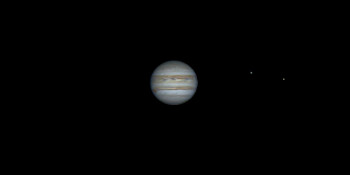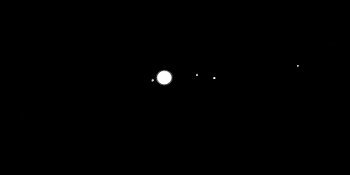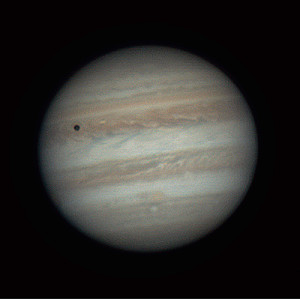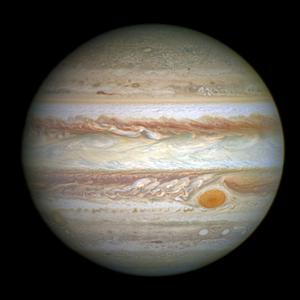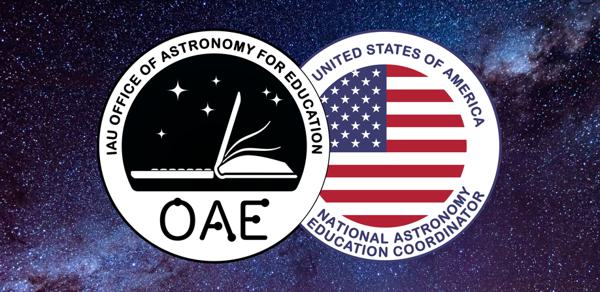Glossary term: Jupiter
Description: Jupiter est la plus grande planète du Système solaire et la cinquième planète la plus éloignée du Soleil. C'est une géante gazeuse d'un rayon de 71 300 kilomètres (km), soit environ 11 fois le rayon de la Terre. La masse de Jupiter (318 fois la masse de la Terre) est supérieure à la somme des masses de toutes les autres planètes et de tous les corps plus petits du système solaire.
Sa distance typique par rapport au Soleil est de 778 millions de km, soit environ cinq unités astronomiques (distance Terre-Soleil), et il lui faut un peu moins de 12 années terrestres pour parcourir son orbite. En 2023, les astronomes ont détecté plus de 90 lunes ou satellites naturels en orbite autour de Jupiter.
Jupiter est visible à l'œil nu. Son nom en anglais dérive du roi des dieux romains. Observée dans un petit télescope, on peut voir des ceintures de nuages de différentes couleurs et une gigantesque région orageuse circulaire rouge (la "Grande Tache rouge"). Quelques sondes spatiales ont été envoyées vers Jupiter au cours des dernières décennies et, en 2016, la sonde Juno de la NASA a commencé à explorer Jupiter et ses lunes de manière beaucoup plus détaillée.
Related Terms:
- Unité astronomique
- Satellites galiléens
- Géantes gazeuses
- Giant Planet
- Grande tache rouge
- Planètes extérieures
- Planète
- Système solaire
See this term in other languages
Term and definition status: The original definition of this term in English have been approved by a research astronomer and a teacher The translation of this term and its definition is still awaiting approval
The OAE Multilingual Glossary is a project of the IAU Office of Astronomy for Education (OAE) in collaboration with the IAU Office of Astronomy Outreach (OAO). The terms and definitions were chosen, written and reviewed by a collective effort from the OAE, the OAE Centers and Nodes, the OAE National Astronomy Education Coordinators (NAECs) and other volunteers. You can find a full list of credits here. All glossary terms and their definitions are released under a Creative Commons CC BY-4.0 license and should be credited to "IAU OAE".
If you notice a factual or translation error in this glossary term or definition then please get in touch.
Related Media
Jupiter's Rotation, by Vishal Sharma, India
Credit: Vishal Sharma/IAU OAE
License: CC-BY-4.0 Creative Commons Attribution 4.0 International (CC BY 4.0) icons
Jupiter Moons Movie2, by Nicolas Hurez, Paul-Antoine Matrangolo, and Carl Pennypacker, United States of America
Credit: Nicolas Hurez, Paul-Antoine Matrangolo and Carl Pennypacker/IAU OAE
License: CC-BY-4.0 Creative Commons Attribution 4.0 International (CC BY 4.0) icons
Jupiter, Io and its shadow, by Ralf Burkart, Germany
Credit: Ralf Burkart/IAU OAE
License: CC-BY-4.0 Creative Commons Attribution 4.0 International (CC BY 4.0) icons
Jupiter
Credit: NASA, ESA, et A. Simon (Goddard Space Flight Center) credit link
License: CC-BY-4.0 Creative Commons Attribution 4.0 International (CC BY 4.0) icons
Flowing Night Sky
Credit: Robert Barsa/IAU OAE
License: CC-BY-4.0 Creative Commons Attribution 4.0 International (CC BY 4.0) icons
